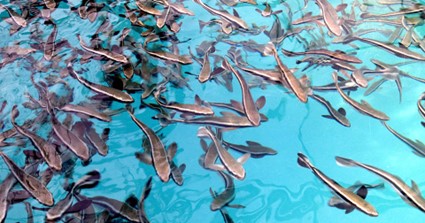
Bluefish
The first records of aquaculture research for cobia dates from 1975, with the collection of wild cobia ova off the North Carolina coast.
The first records of aquaculture research for cobia dates from 1975, with the collection of wild cobia ova off the North Carolina coast.
Cobia has good aquaculture potential due to its rapid growth and good meat quality. Currently, the countries producing cobia are China, Bahamas, Belize, Dominican Republic, Mexico, Philippines, Puerto Rico, United States of America and Vietnam.



